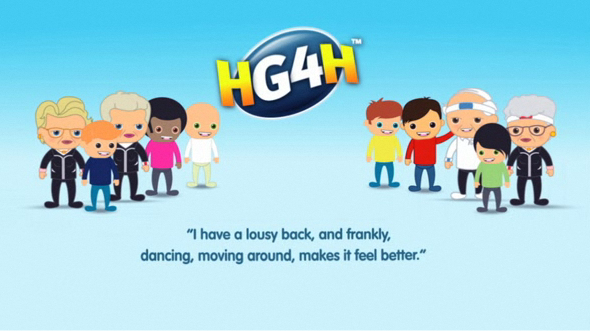Humana, one of the nation’s largest health benefits companies, sponsors Humana Games for Health (HG4H), to understand how video games can be used to encourage people to have a more active and healthier lifestyle.
HG4H is launching the InsertCoin competition on June 11, 2009 at 9:00 a.m. EDT. It will conclude at 5:00 p.m. EDT on September 9, 2009. The competition is for new game concepts that are innovative and entertaining enough to motivate kids, families and seniors to be more active or encourage them to make healthy decisions.
If your idea is selected, you could win a cash prize and have the opportunity to commercialize your ideas. Winners will be announced and posted online at http://www.HumanaGames.com in mid to late November of 2009.
While exploring HG4H be sure to watch the HG4H video for a dose of inspiration:
• will be judged in 3 competitive categories; Kids, Families, Seniors (65+)
• can be for single or multi-player games
• can be played on a video game console, PC/Mac, mobile device
• can incorporate accessories, such as GPS, acceleromter, gyroscope, etc.
• can be used in with fitness gear, like bikes, running shoes, or skateboards
• can not use technology at all
$10,00 will be awarded as follows:
• $5,000 – 1st Place Prize
• $3,000 – 2nd Place Prize
• $2,000 – 3rd Place Prize
Download official rules here.
Stanford University – Hasso Plattner Institute of Design (d.school), offered a two-quarter interdisciplinary course, Design for Agile Aging, in Winter/Spring of 2008 to bring perspectives from Computer Science, Design, Social and Behavioral Sciences, and Medicine to develop projects that address the potential of people to maintain vitality and mobility as they age. The projects found innovative ways to integrate computer and device technologies with behavioral and social interventions.
The Spring quarter final project was Memic, a 2-way TV intergenerational dancing experience that creates social connectedness, encourages physical activity and feels more like fun than exercise. The video explains it well.
The available presentation explains the concept in detail and offers more insights that pertain to the intersection of fun, physical movement and technology. We thought the following key points offer ideas on how other existing health technology devices can offer a more attractive experience to the consumer.
- More people responded to “Dance” than “Exercise”
- With family = more fun + more motivation
- Children give (adults) permission to do silly things
- Intergenerational, coaching dynamic
Bounce, A Common Experience Game

Bounce, A Common Experience Game is another game to be played by members of different generations. Ken Goldberg, Irene Chien, Jane McGonigal, and Greg Niemeyer developed Bounce for an expo in San Jose, CA for ISEA in 2006. The game is a tool to engage people of different ages in conversation. During a web-supported phone conversation, the game prepares questions that one young person and an older person answer together. This way, they discover a number of things that they have in common, and perhaps some things that set them apart.
Continue the Conversation…and Bring Your Best Game!


